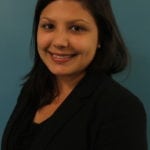As students learn and develop valuable skills and competencies for college, careers, and beyond both in and out of school, it seems natural to explore the intersection of afterschool and competency-based learning (CBL).* It seems to me that, when done well, afterschool and CBL show promise in helping prepare students for college and careers. When done poorly, however, I worry about exacerbating existing achievement gaps and furthering inequities.
High-Quality Afterschool
Afterschool helps youth explore, set goals, and prepare for postsecondary education; creates partnerships with employers to help youth learn about and experience careers first-hand through work-based learning, apprenticeships, or internships; develops engaging, relevant, and age-appropriate programming for youth that connects their academic studies with hands-on, project-based, collaborative work, that is set in the context of real-world challenges; and provides youth with opportunities to develop 21st century and employer-desired skills such as critical thinking, teamwork, communication, and self-regulation skills.
Competency-Based Learning Done Right
As a strategy to help students learn, CBL also focuses on the process of learning the abovementioned skills, as well as academic and technical content. CBL is also less reliant on seat-time and allows students to advance at their own pace to the next level or grade upon demonstration of mastery of certain skills or competencies. When aligned with postsecondary education standards or employer-desired skills, CBL contributes to a student’s college and career readiness by giving them engaging, learner-centered opportunities to develop and master important skills.
The Intersection
Afterschool has often embraced the principles of CBL as afterschool programs tend to engage students in personalized learning and encourage student ownership of their learning. Additionally, CBL allows students the flexibility to demonstrate mastery at their own pace and in a variety of learning environments, often during afterschool hours. In sum, it seems that these two learning venues have a great deal to offer one another by learning from and working with each other, especially in terms of preparing students for college and careers. Yet, this idea of afterschool informing CBL and vice versa is still new and emerging and has not yet grown to scale.
Equity Worry
As previously mentioned, when done well, afterschool and CBL show promise in helping prepare students for college and careers. By contrast, when done poorly, already existing achievement gaps and inequities may increase. For instance, we know that the quality of afterschool programs vary across providers and places, leading to inequitable distribution of high-quality programming and services. We also know that the challenge of a competency-based system is losing the minimum hours of seat-time assured to all students under the Carnegie Unit. Like the classic theory versus practice conundrum, how do we ensure the ideals of afterschool and CBL are a reality for the youth and students who need it the most?
Moving forward, as AYPF continues to explore practices and policies to ensure that all students are ready for college and careers, the intersection of afterschool and CBL may provide an opportunity to more equitably serve students.
*For more information about AYPF’s recent work on the intersection of afterschool and CBL, see our discussion group and webinar resource pages, and stay tuned for our forthcoming publication.
Jenna Tomasello is a Program Associate at the American Youth Policy Forum.



